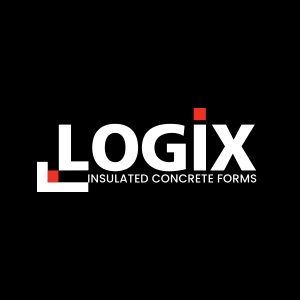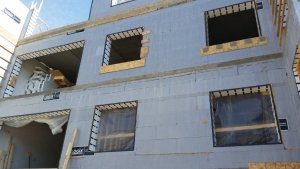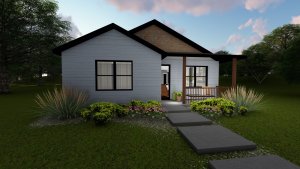Pivoting from a traditional wood-frame design to ICF is an excellent way to boost your home’s energy-efficiency, comfort levels, and resilience.
ICF home design is generally straightforward and painless, too; that said, there are certain things you can do during the design phase to ensure that your ICF project goes off without a hitch.
In the post below, we share nine essential tips for designing an ICF home.
9 Crucial Design Tips for ICF Homes
Below are the nine essential steps for designing your home with ICFs.
1. Find an ICF-experienced Designer
The first step to building an ICF home is to find a designer who is experienced with this construction method. ICF buildings are relatively straightforward, but there are some design nuances that set ICF construction apart from light-wood frame.
The simplest way to find a local ICF experienced engineer is to take advantage of Logix ICF’s Pro-Link tool. This online resource can help you in two ways:
- Find a Logix Territory Manager. You can find and get in touch with a Logix Territory Manager who’s close to your building site. A Logix Territory Manager can recommend an ICF-experienced engineer who’s suitable for your project and reputable in your area. The Territory Manager can give you plenty of other handy advice, including design advice, cost estimates, and more.
- Find an ICF-experienced Designer. You can find an ICF-skilled designer directly, without going through a Territory Manager. Doing so would expedite your search, but you could miss out on valuable advice and recommendations from the Territory Manager.
If you already have a designer chosen and they’re not proficient in ICF design, don’t despair. A Logix Territory Manager can provide adequate technical support to make their maiden ICF design a complete success.
What’s more, the designer can attend a free primer for first-time Logix designers and builders. The webcast is a valuable, informative session for any novice ICF designer.
2. Keep Internal Dimensions True When Converting A Design to ICF
When converting a conventional home design to ICF, if at all possible keep the internal dimensions true and increase the dimensions of the walls outward instead.
That’s because ICF walls are thicker than their wood-framed counterparts, so when you pivot a wood-frame design to ICF, you end up needing to accommodate the extra width.
Instead of encroaching on your living space and reducing the net floor area, it’s best to add the extra thickness to the outboard face of the home’s perimeter.
Note, however, that you still need to be mindful of your minimum setback requirements as you expand the home’s footprint.
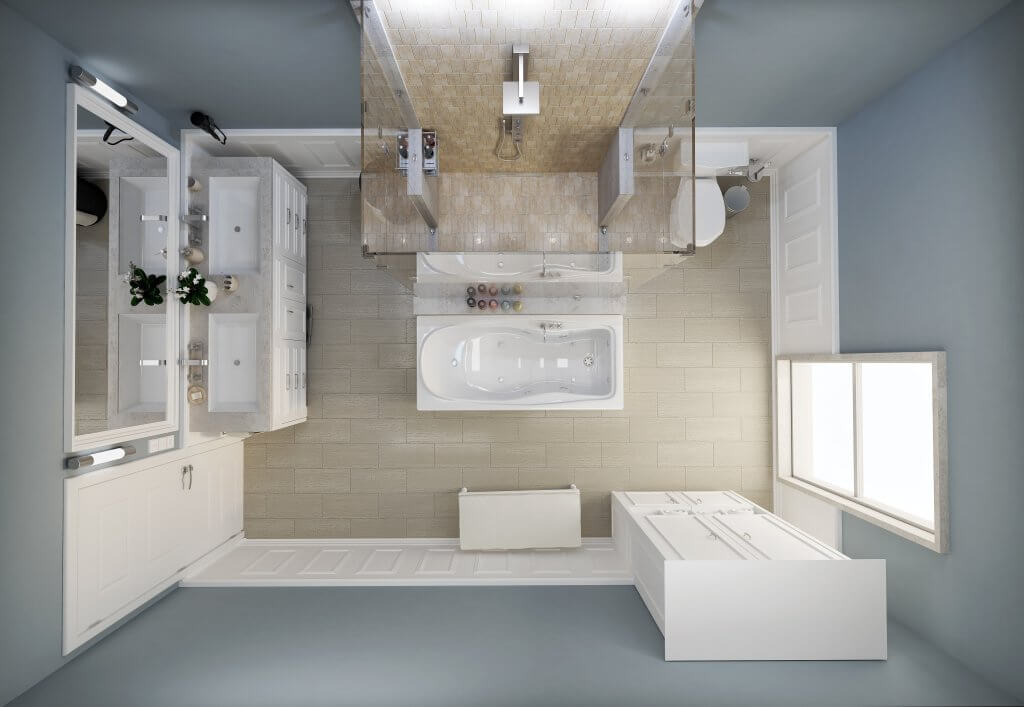
3. Pay Close Attention to Floor Areas of Bathrooms and Utility Spaces
If you’re unable to extend the wall thickness outward (due to setback constraints, for example), you’ll have no choice but to reduce some of the home’s floor areas.
And while shaving off a few cumulative square feet off the area of a living room won’t be very noticeable, such a reduction can impact the functionality of smaller spaces like bathrooms, utility rooms and stairwells.
These spaces are generally small enough to begin with, and contain a great deal of mechanical services, fittings, and equipment in them.
So, when you convert a conventional home design to an ICF, make sure the wider ICF walls don’t render bathrooms and utility rooms dysfunctional due to a reduced floor area.
4. Use the Correct Concrete Core Width
Logix ICFs come in five different concrete core thicknesses, and each has it’s place in the correct design of an ICF home. Below are the five Logix ICF concrete core widths:
- 4 inches
- 6.25 inches
- 8 inches
- 10 inches
- 12 inches
The concrete core is typically thicker for the foundation, as it must support the highest loads. Conversely, the cores can get narrower with each subsequent floor above grade.
To use concrete cores wisely in light of this simple logic, follow the two steps below:
- Opt for the minimum required concrete core width on each floor. You can use the Logix One Minute engineer tool to assess various scenarios.
- Transition thicknesses at the floor. Changing the concrete core width at the floor allows you to conceal the transition.
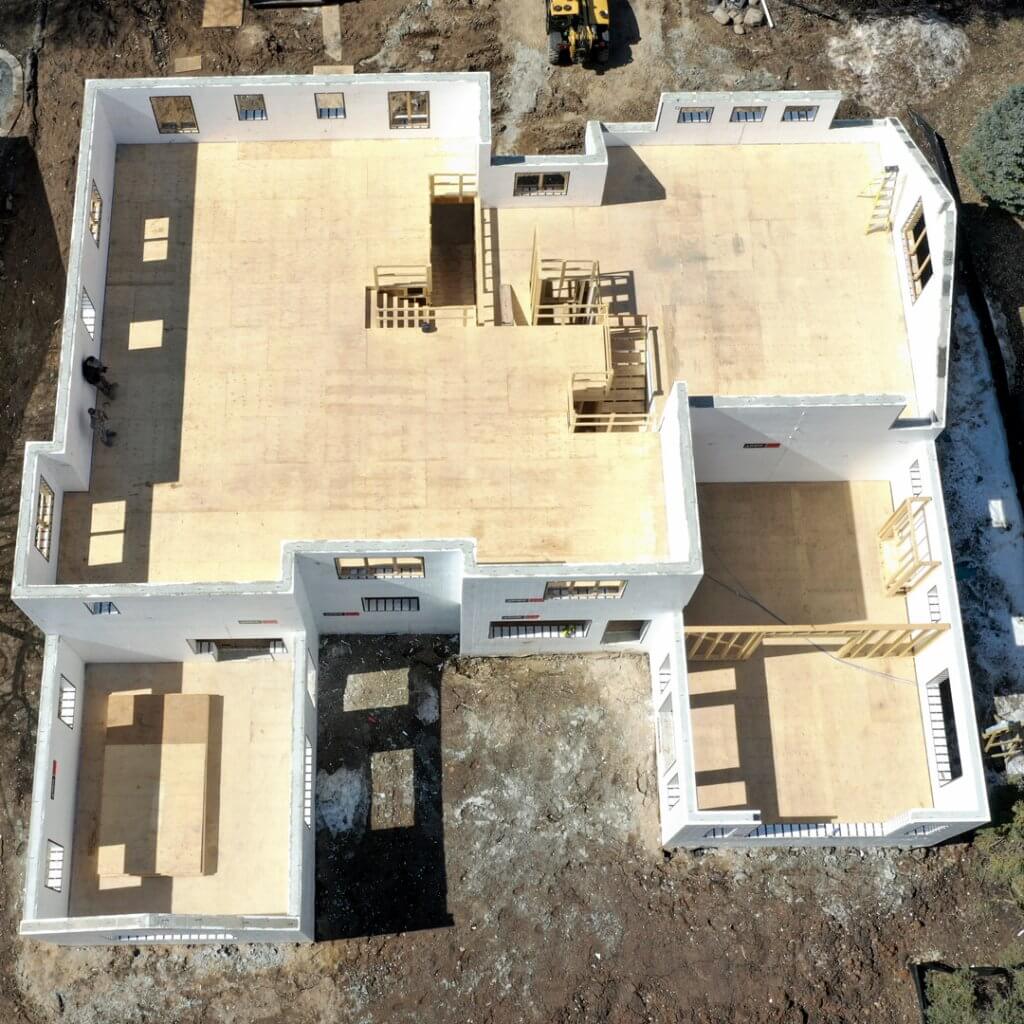
5. Avoid Bump Outs
It’s best to avoid bump outs when designing an ICF home. Bump outs tend to cost more to construct and get in the way of the space’s functionality.
That said, if you’ve got your mind set on bump outs, the most efficient way to design them is with a 32-inch offset, or at least a 16-inch offset.
6. Design Walls in 4-inch Height Increments
Logix ICF blocks allow you to eliminate waste and on-site cutting when you design walls in 4-inch height increments. That’s why the most efficient wall designs are those that are made in increments of 4 inches — remember this during the design phase and you’ll save considerably by minimizing waste.
7. Optimize Door and Window Openings
Optimizing the door and window opening design can help you build efficiently and minimize waste. Below are four things you should consider when designing and building openings in an ICF wall:
- Place windows on top of a Logix course: A great way to reduce waste and cutting in the field is by placing windows on top of a Logix ICF course. Doing so eliminates the need to rip the blocks in order to tweak their height according to the window dimensions.
- Choose the optimal header thickness: The most ideal header thickness for doors and windows in ICF walls is 16 inches, so do your best to design with this dimension in mind.
- Keep openings spaced 12 inches apart or more: If the openings are designed to be closer than 12 inches apart, it’s may be better to merge them into a single opening,
- Use the Logix Pro Buck: Logix Pro Buck™ is a highly insulated door and window bucking system that resists rotting and provides long-term insulative stability to the wall assembly. Be sure to incorporate the Logix Pro Buck into the drawings at the design phase if you choose to use this bucking system.
Don't miss a thing!
Subscribe for the latest in the ICF world, exclusive content, insider industry news and limited edition webcasts.
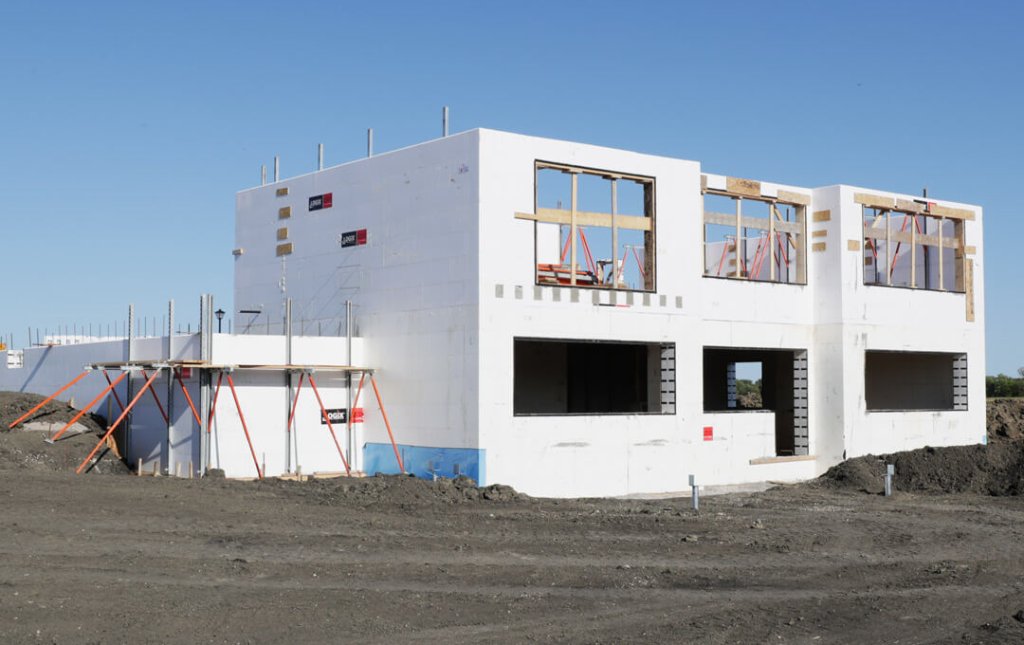
8. Optimize Plumbing and Venting Configuration
ICF walls are not thick enough to accommodate water closet vents. That’s why you should install these vents inside the interior partition walls as opposed to the exterior ICF walls.
That said, you should still take the time to plan any penetrations in the exterior ICF wall (such as those accommodating the vent exhaust) before the concrete pour.
9. Optimize Wall Length Sections
You can eliminate vertical cuts in wall sections — thus boosting the speed and efficiency of your crews — by designing the walls to optimal lengths. The ideal length is the sum of the following:
- Length of the long corner leg +length of the short corner leg + appropriate length in increments of 4 feet
If you’re unable to keep the length of wall sections in line with the formula above, you can easily cut the ICF blocks vertically at the embossed line — doing so preserves the interlock and eliminates the need for additional form support.
And if the wall’s dimensions do not allow you to cut the blocks along the embossed line, the installers may create a “stacked seam”, preferably beneath a window opening. This approach requires temporary supports from the interior and exterior before the concrete is poured.
A Few More ICF Wall Design Tips
Below are a few more tips you should consider when designing ICF walls:
- Avoid cantilevers: Cantilevers are possible, but you’ll need steel beams to facilitate them, which can greatly impact your project’s budget.
- Consider an OSB rim for 9’4” basements: A 9’4” inch basement height is optimal for dweller comfort, but not ideal for drywall placement. If your ICF basement measures 9’4” in height, place a 4-inch OSB rim at the bottom perimeter, with 9-foot drywall sections on top of the board. Then, you can attach the baseboards directly to the OSB rim.
- Build gable ends with ICFs: If the home’s design features a vaulted ceiling, it’s best to construct the gable ends with ICFs.
Wrapping It Up
Getting the design right is key to building an ICF home successfully. In the post above, we’ve shared nine important design tips for ICF homes – the advice in this article should help you streamline both the design and construction process.
If you’d like to learn more about ICF design and construction before your project gets underway, be sure to reach out to a local Logix ICF dealer.

